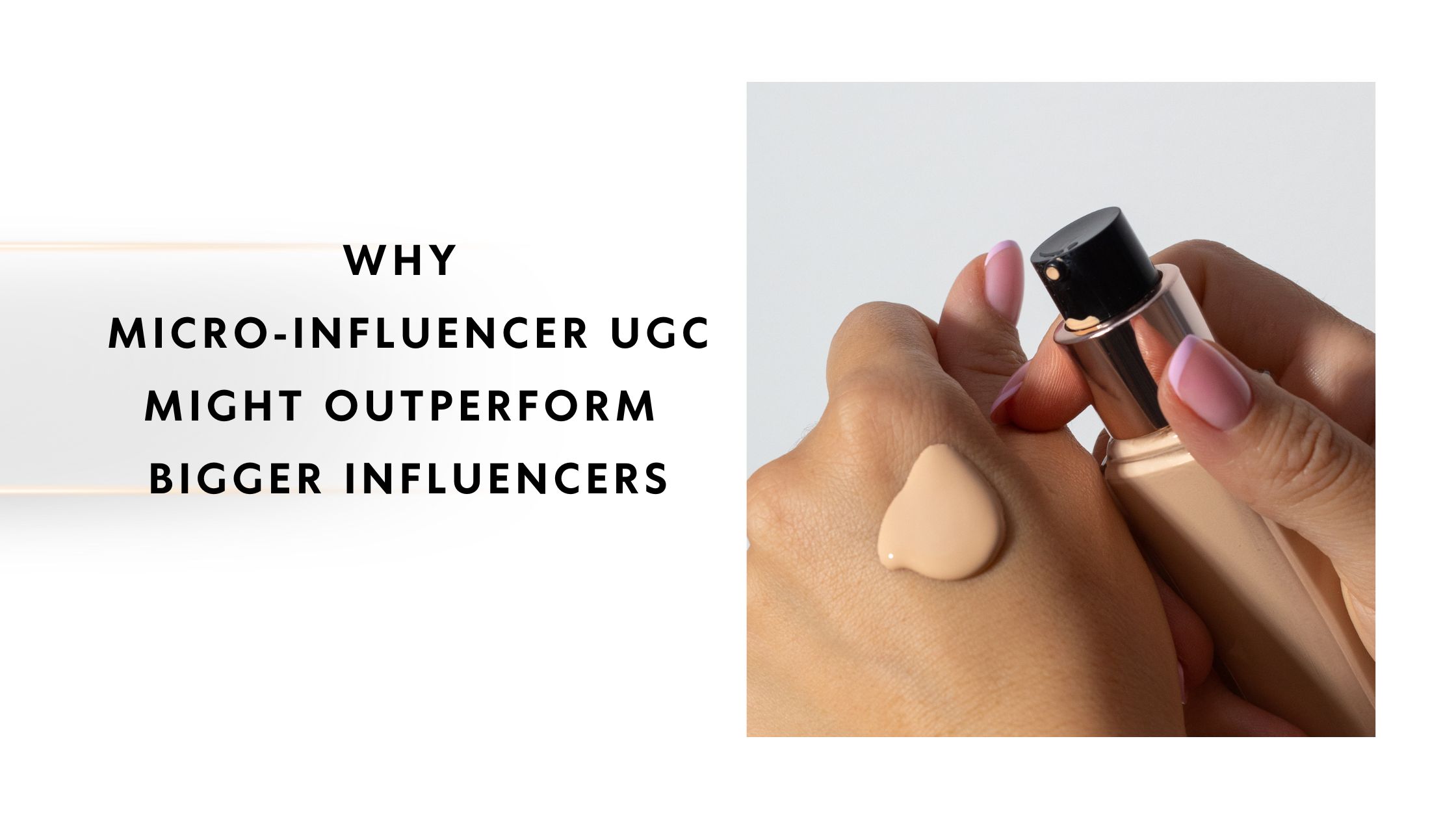
Micro-Influencers Can Be Just As Great Of An Option As Celebrities…
Size definitely matters when it comes to content creators & brand influencers… but not in the way you’d expect.
Micro-influencers can be just as effective as their major influencer counterparts because they provide a decently broad reach AND engagement… at a fraction of the cost.
Both mega and micro influencers have value to offer, and brands can benefit from both depending on their needs and goals.
What are micro-influencers & why do brands need them?
Some marketers put the micro-influencer (or nano-influencer) range between 1k and 100k followers, but the general rule is that a micro-influencer has fewer than 10k followers.
What do those followers have in common?
(They’re certainly not following because the person is viral & famous.)
Are they following because they relate to the content, brands, and services that the influencer promotes? Is it because they appear trustworthy? Is it because they’re REAL & believable? Because they’re a peer who feels like a friend? Markerly.com found all of these to be true.
You can get dozens of micro-influencer posts that actually resonate and connect with your brand audience for the price of 1 post from a celebrity influencer. Mega-influencers often have fans that observe and follow rather than engage. Micro-influencers present themselves as like-minded consumers, which can make their UGC feel more genuine. Followers use this to gather purchasing information from an influencer who reminds them of themselves.
Your products shine in micro-influencer collaborations whereas often in celebrity influencing, it’s the celebrity who shines.
Just as important is the fact that engagement rates can decrease as audience numbers increase. Popularity in an influencer is tricky because it doesn’t automatically translate to connection or purchases.
Recent research has found that often, the more followers an influencer has, the harder it is to authentically connect with them. Not always, but often enough to remark upon.
Many stars are just followed by passive observers, meanwhile, micro-influencers can know the most active & enthusiastic commenters on their posts by name. Micro-influencers aren’t one-size-fits-all; they’re generally more nuanced.
The bigger a celebrity influencer gets, the more their content looks like an ad, and for some brands, this isn’t beneficial. Venture Beat found that only 33% of consumers trust ads, while a whopping 90% trust recommendations made by trusted & like-minded peers.
HELLO, micro-influencers & welcome to our table.
Micro-influencers are hyper-targeters, garnering interested followers they can easily connect with because they’re small. They know their niches, and they excel in them.
Why audience engagement is so important

Engagement is the whole reason we need influencers to share UGC.
- Authenticity & Trust: Influencers have built trust & credibility with their followers over time. When they engage with a follower over a brand or product, it’s seen as a genuine recommendation rather than a paid advertisement. This authenticity can significantly impact consumer trust, leading to increased brand loyalty & higher conversion rates. We trust our peers.
- Audience Reach: Influencers have access to niche or broad audiences depending on their niche & following. When they engage with a brand, they expose it to their followers, engaging with them & expanding the brand’s reach to potential customers who might not have otherwise discovered it.
- Targeted Marketing: Influencers often have a well-defined & specific target audience that aligns with a brand’s target demographic. Engaging with the right influencer allows brands to reach their ideal customers directly, increasing the likelihood of conversion.
- Content Creation: Influencers are skilled content creators. When they engage with a brand, they generate high-quality, tailored content that resonates with their audience. They have to. This content can be repurposed across various marketing channels, saving brands time and resources on content creation. They don’t churn out mediocre vanilla soft-serve. They’ve got flavor & sprinkles, the kind they already know their specific audience loves.
- Storytelling: Influencers excel at storytelling. They can weave a brand’s message into their own narrative, making it more relatable and compelling to their followers. This narrative approach is more effective than traditional advertising, because it speaks to folks. And micro influencers have the time and inclination to answer questions, comment back, and continue the brand story.

- Social Proof: When an influencer engages with a follower over a brand, it provides social proof of the brand’s legitimacy & quality. Consumers are more likely to trust and try products or services endorsed by someone they relate to, someone who exhibits real-world experience with the product and not just “Hey, you should buy this because I & I told you to”.
- Engagement Metrics: Influencer marketing offers the advantage of measurable engagement metrics. Brands can track likes, shares, comments, clicks, and other interactions to gauge the effectiveness of their influencer campaigns, allowing for data-driven decision-making and optimization. And when a negative comment or question is shared, a micro influencer who actually loves the product already knows the answer, and has the time to respond.
- Community Building: Influencers build communities around their content. When they engage with a brand, they introduce that brand to their community. This leads to increased engagement from the influencer’s followers, including discussions, recommendations, & even more user-generated content related to the brand. Most huge mega influencers profit from number of followers, not from the connectedness and engagement of their community. A lot of celebrity influencers don’t have to be concerned with engagement because they get paid just for their numbers, so they don’t have to engage with their audience.
- Diverse Platforms: Influencers operate on lots of different social media platforms, catering to different demographics and user behaviors. Engaging with influencers across multiple platforms allows brands to diversify their marketing efforts and reach a wider audience. Each platform requires a slightly different communication strategy, and micro-influencers know this. Engagement isn’t one-size-fits-all.
- Adaptability: Influencer marketing is adaptable to various marketing goals, whether it’s raising brand awareness, driving traffic to a website, increasing sales, getting product feedback, or launching a new product. Micro influencers who are authentic and genuine will tailor their content and engagement strategies to align with their promoted brands’ specific objectives. They have time for this because they have fewer brands to promote, and they tend to love and believe in the brands they choose.
If engagement weren’t necessary, standard ads would still be king. But they aren’t.
UGC is.
And many smaller influencers are excellent at audience engagement.
ILOLA™ offers all levels of influencer marketing collaborations from micro to mega because brand marketing isn’t one-size-fits-all…
Mega-influencers have HUGE audiences and far-reaching content but can be out of range for many smaller brands.
Micro-influencers cost less and often end up engaging more with their audiences than celebrity influencers… because they have to.
ILOLA™ is here to help you find the best collaborations for your brand.
The ones who’ll speak to your ideal audience and stop their scroll.
We want your targeted audience to be wowed by your specific products and are happy to help you decide exactly how to work that magic.




